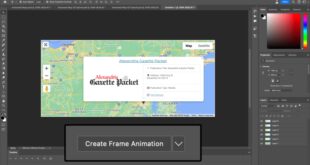How To Add Depth To Images Using Shadows In Photoshop – The right use of shadows can elevate your product image from amateur to professional. It helps to make the product more natural and realistic by adding a sense of shape and depth to your products.
The best part is that it doesn’t require a big budget or a massive team to create professional product images. You only need to spend a little time on your product photography and the post-production process.
How To Add Depth To Images Using Shadows In Photoshop
There are many types of shadows, but for this blog we will focus on the most versatile type of shadow that applies to all types of products – drop shadow.
Photoshop Tutorial: How To Quickly Add Shadows And Highlights
When youare taking your product photos in a studio, it can be difficult to create the perfect shade, especially if you are not a professional photographer. Fortunately, it is quite easy to add a shadow using Adobe Photoshop, during post-production. I will explain exactly how to do it step by step.
While the steps I will share here are easy to follow, you must ensure that these two main rules are followed in the end. Otherwise, you will end up with unprofessional product images in your online store.
To begin, open your image in Photoshop. Make sure you start with a high-resolution image. I will demonstrate the process on a white dinner plate that is already on a white background. You can see that it looks a little flat.
In the ‘Layers’ panel on the right side of Photoshop, select your ‘Background’ layer and duplicate it. You can right click on the layer and select ‘Duplicate Layer’ or hit Ctrl + J (Windows) or Command + J (Mac) on your keyboard. You will see a ‘background copy’ appear. This makes it so that you can modify the duplicate layer without worrying about accidentally damaging or distorting your original image.
How To Create Shadows For Images In Photopea?
Create a path around your product in ‘Background Copy’ and remove the background. You can see that the background has been removed by looking closely at the ‘Layers’ panel; your product should have a gray and white checkered background (Photoshop’s way of showing transparency) on the top layer. Alternatively, you can hide the original background layers.
You should also duplicate this layer. A little organization goes a long way in Photoshop, so get into the habit of organizing layers. Name this layer as ‘Product’. I also suggest renaming the ‘Background Copy’ layer to something like ‘Shadow’.
Select your ‘Shadow’ layer, then press Ctrl + Tor Command + T to select the transform tool. Hold down the Ctrl or Command key, then click the top center control point (the dot at the top of the image) and drag the mouse down to position the transform at the correct angle to match the incoming light source on your subject. If necessary, use the move tool to resize the transformed image by clicking and dragging in place. Don’t worry about it being perfect because you have a chance to redo it later.
In your Layers panel, click the ‘Lock Transparent Pixels’ button next to the word ‘Close’. This ensures that the next step will only affect the transformation you just did (which will be your shadow). Check out this short tutorial from SitePoint for some background on the powerful ‘lock transparent pixels’ feature.
How To Use Light And Shadow To Create Depth And Dimension
Select the ‘Gradient’ tool (keyboard shortcut ‘G’), then use the drop-down menu next to the gradient bar at the top of the Photoshop window to select the third option down for a black and white gradient. Also select ‘Linear Gradient’ in the menu bar icons on the right.
To apply the gradient, simply click on the base of the shadow closest to your object, then drag to the far edge of the shadow. This should convert your transformed image into a smooth gradient, but it still won’t look natural. Now let’s clean it up.
To the right of this button, use the drop-down menu to select ‘Multiply’ as the blend mode. To read more, click to this tutorial on blending modes from Photo Blog Stop.
Click on ‘Filter’ in Photoshop’s main menu, then select ‘Blur’ and then ‘Gaussian Blur’. Choose a pixel radius for the blur. You can experiment here, as this effect will look different depending on the resolution of your image file and its specific shape. If you go overboard, use Ctrl + Z or Command + Z to undo one error, and Control + Shift + Z or Command + Shift + Z to go back more than one step.
How To Add A Drop Shadow In Photoshop
Now you can do a little more transformation. Activate the ‘Free Transform’ tool again and transform your shadow. Try to follow the light source and move the shadow over it. This may take some trial and error. You can also use the “Opacity” function in the “Layers” panel to change the opacity level of the shadow. This will make the shadow more subtle.
For some final touches, take your eraser tool (E) and set its opacity to 20-25% and flow to 60%. Right click on the canvas and set the size and hardness of your brush. The size of the brush will vary on the resolution of the image. Set the hardness to 0. Quickly brush around your shadow layer to soften any hard shadows you created. You can use Ctrl + Z / Command + Z to undo your last action. Just play around until you find something that you feel looks the best.
That’s it! Now you’ve created a shadow drop from scratch! And if you want more Photoshop image editing tutorials, check out the blog. Read on as we dive into simple techniques that can transform your photos, making each new element pop with depth and dimension.
If you work with an isolated object layer selected, shadows add depth and realism, subtly emphasizing its presence especially the shadow.
Photoshop Tricks: Adding Depth And Dimension To Model Faces 👩
Think of it as reading a signal in low light versus having a spotlight on it. A well-placed shadow makes the elements stand out.
Refinement involves adjusting the opacity and angles to get those darker shadows just right, and you can learn more about how blending modes can help with this process.
For cast shadows helps manual intervention. Use the healing brush tool or the gradient tool to simulate soft edges.
Pro Tip: Use layer masks to subtly erase parts of your shadow layer. This achieves a realistic result. Also use multiple shades if needed.
How To Add Inner Shadows In Photoshop
Textured surfaces often require different shadow effects to look believable. Layer masks offer precise control over which parts of the shadow should be visible.
Improving your shading skills will improve the depth and quality of your images. Practice now and see the difference in the results of your Photoshop project!
Lightroom has been a valuable tool for enhancing photos. Its powerful features make it possible to adjust colors, tones and contrasts to achieve clear and polished results.
First, open your photo in Adobe Photoshop. Make sure the object you want to add a shadow to is on a separate layer. This makes things easier.
How To Add A Drop Shadow In Photoshop (step By Step)
Pro Tip: When you’re happy with your shadows, use the eraser tool on low opacity to refine the edges. This adds a final touch of realism.
Practice makes perfect. Create shadows that can transform flat images into dynamic ones. A well-placed shadow enhances the realism of your work.
When improving your designs, understanding the different types of shadows and their purposes can greatly improve the visual impact of your work.
They make your object or text appear as if it is floating above the background, with a shadow around it.
How To Add Shadows To Text In Photoshop: A Simple Step-by-step Guide
Adjust the drop shadow dialog to match the lightness and depth of the original image for a seamless drop shadow blend.
Pro Tip: To enhance the realism of the object, apply a drop shadow. This can be done by selecting the object layer and adding a drop shadow from the Layer Style options.
This type of shadow looks like your object is blocking the light and casting a shadow on another surface.
This adds a realistic touch, especially if you want the object to be attached and appear part of the scene.
How To Create A Double Exposure In Photoshop
Inner shadows add depth inside an object rather than outside. They create the illusion that parts of the interior of the object are hollow or hollow.
Inner shadows are useful for making buttons appear pressed or to give text a more embossed appearance. This subtle effect makes your object look more detailed and dimensional.
Pro Tip: knowing how to use lens correction in Lightroom can further enhance the overall effect by correcting any distortion, and ensuring your shadows look natural. Additionally, familiarizing yourself with different digital cameras can help you better understand how shadows and light interact in photography.
Capturing additional elements that enhance the realism of your shadows can significantly increase the level of your skills and transform your visual presentations.
Tips For Creating Realistic-looking Shadows In Photoshop
First of all, know where your light is coming from. Picture it in your head. If your light is on the left, shadows fall on the right. Simple, but easy to mess up.
To precisely select areas for applying highlights or deepening shadows, learn to use the object selection tool with our dedicated tutorial.
Drop shadows are quick fixes. Select your layer, press the “fx” icon at the bottom of the layers panel, and choose “Drop Shadow” play with Distance, Spread and Size to get it right.
For a more polished look, consider
 Alveo Creative Blog Guiding users through techniques for enhancing images, retouching portraits, and mastering popular editing software
Alveo Creative Blog Guiding users through techniques for enhancing images, retouching portraits, and mastering popular editing software




